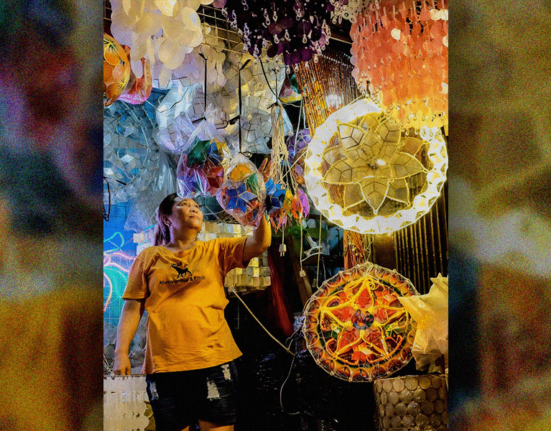Dust off that Christmas tree! Checking the list of inaanaks!
It’s September and yet, you can hear Christmas songs on the radio, and our own version of a Christmas mascot in singer and songwriter,Jose Mari Chan filling up your social media with memes. It’s definitely Christmas. But wait, again, it’s just September!
A foreigner looking at Filipino households and listening to Filipino radio might think he must be in a time warp. But, that is just how Filipinos – a dominant Christian country – prepare for what is now known as the longest Christmas Season in the entire world which lasts from the first day of September until January!
What is Christmas like where you live? Post a photo or video in the comments section!
Why do Filipinos celebrate Christmas the longest?
People in the Philippines are deep-rooted in faith, making the vast majority of Filipinos to be Catholics. The celebration of Christmas in the country is considered to be the longest due to the 5 months celebration from September to January.
The long event is widely embraced by many – something that all living generations – from the boomers, the GenXs, the Gen Zs and Gen As – can agree on. So much so that Christmas songs will start playing as soon as November 1 which is during “All Saints Day.”
“I think that the reason why the Christmas celebration here in the Philippines starts early and ends way past the actual Christmas day is mostly influenced by the fact that more than half of the population is Christian,” Ysabelle Javier said.
“Because of this, many individuals, especially elderly, avidly participate in the practices of our religion and then pass this on to their children. It’s more geared towards influence, really.” Javier added.
But more than anything, Christmas coming in September is also commercial centered will malls prepping up Filipinos for the season and of course, the spending.
Filipinos love to decorate houses during Christmas and shopping is a part of it.
Retail stores will give a mega push to Christmas-themed merchandise for the so-called “Christmas creep.” in many countries.
But for Filipinos, celebrating Christmas early at the start of the “Ber” months is more than the commercial side of Christmas, as Filipinos attend several masses throughout the season and faith forms an intrinsic part of celebrations.
Christmas is also a time for Filipinos to prepare for the much awaited reunion of Families, with the Filipino culture being family centered.
What makes the Filipino Christmas unique:
“I think it’s a pretty unique way of celebrating Christmas.” Nathan Esguerra stated. “Some people can get impatient waiting til december in order to celebrate and give presents. Christmas isnt just about giving and receiving but celebrating jesus and having these so called Ber Months is pretty expected from filipinos.”
From hanging the parols on ceilings to receiving the ampaos from our ninong and ninangs. These are some Filipino traditions that you wouldn’t be able to see anywhere from different countries.
“My lola would start prepping the tree and lights around the 1st week of September. My mom and I would start gift shopping.” A memory shared by Alissa. “Others may find it unnecessary, but it definitely hits home for some of us.” Allisa added.
Prior to that here are some things that makes Filipino Christmas unique:
Parol
Hanging the parol before Christmas has been part of every Filipino’s childhood. For older generations—we grew up with a makeshift parol with the use of recycled materials that was later formed and shaped into a star.
THAT Red Envelope from ninong and ninang
The red envelope, notably known as the “ampaw” symbolizes prosperity and good wishes. We know it as this envelope that is filled with money that we either give or receive from our family and/or friends.
Courtesy: pexels.com / @Angela Roma
Carolling
Who amongst you gets the sense of nostalgia of your carolling moments? You probably heard or even sang songs such as “Ang pasko ay sumapit” or “Sa maybahay, ang aming bati.” Regardless of your choice of song—as long as you have your makeshift instrument (made from recycling products) you’re good to go.
“One of the memory that I can’t forget is that when there’s a kid singing outside our door i’m so excited to open the door and watch them sing and give them some coins after. For me, carolling made christmas even more special.” A memory shared by Shane Gongora.
Simbang Gabi
Simbang Gabi is a night mass that begins on December 16 and ends at midnight on December 24 and can start as early as 4 am. It is a tradition amongst Catholic Filipinos where they express gratitude to God for everything.
Courtesy: pexels.com / @Zac Frith
Noche Buena
Christmas dinner with family is nothing unusual from other countries. But for many Filipinos—this is very special for them they get to celebrate this special event together as one. This includes a feast to be eaten by everyone and gifts to be exchanged.
Courtesy: unsplash.com / @yuhandu
Feast of The Kings
Three Kings Day, also known as the Feast of the Three Kings, is the last ceremony that concludes the twelve days of Christmas on January 6. This is celebrated by Roman Catholics, honoring Jesus Christ as a ruler of all creation.
Gen Z and Millennials take:
For this article, some people from the younger generation were given a chance to express their thoughts and reaction on the said longest Christmas celebration.
“Filipino Christmas, aside from the 4-month long celebration, is unique in the fact that it is a melting pot of cultures. We took the religious parts of Christmas from our Catholic roots, we took the lavish celebrations and giving gifts from the modernized thinking of what Christmas is all about.” SC stated. “Christmas is prime time for reunions, cold vacations, dates, seasonal food and feasts, church gatherings, and so much more that can or could not be a Filipino tradition. The Santa’s, Saint Nicholas’, and Jesus’, We could go on and on as to what the Filipinos have adapted to their Christmas festivities. And I think that is what gives our Christmas that local flair.” Sc added.
“Overall, it’s ‘iconic’ for the majority of Filipinos and I guess it’s our way of celebrating the holidays.” As stated by Nathan Esguerra
With reports from Deanna Lorainne Macaranas









